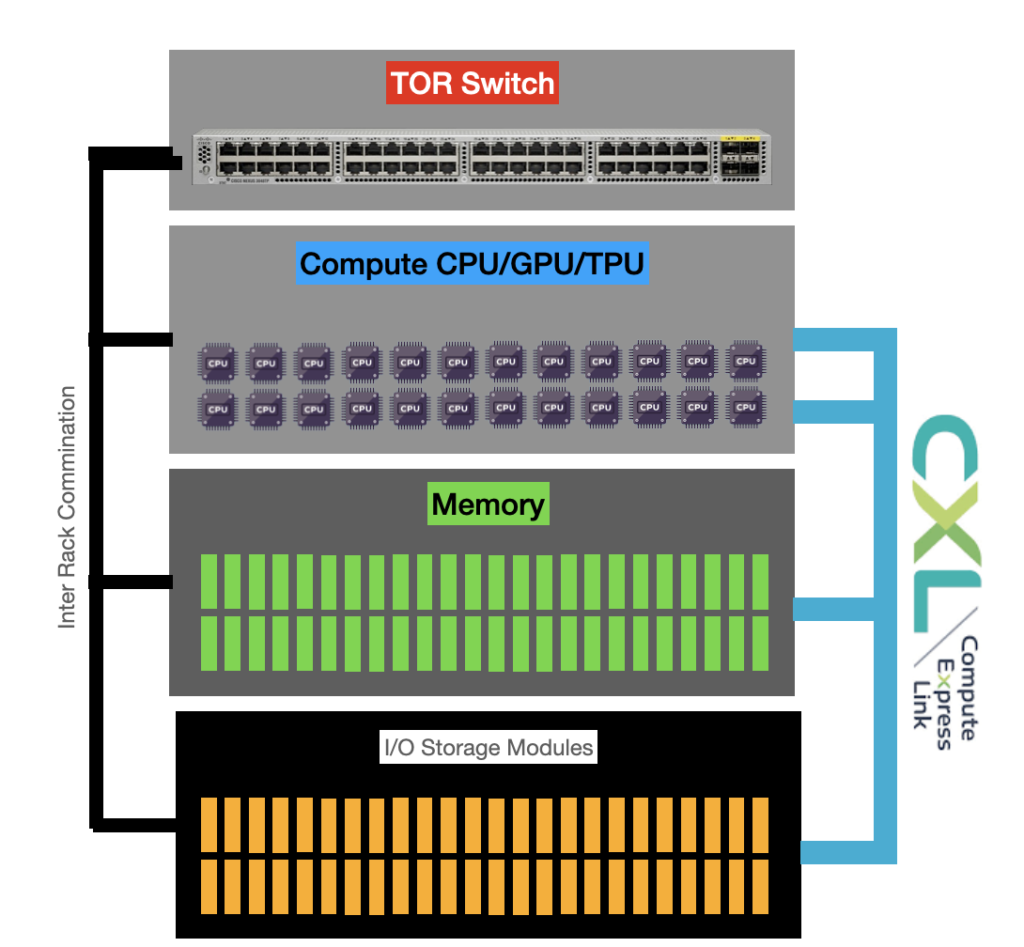In the realm of data processing and server architectures, emerging technologies have the potential to reshape the landscape and unlock new levels of performance and flexibility. One such innovation that promises to revolutionize the industry is Compute Express Link (CXL). Lets explore the transformative impact of CXL and its role in driving the rise of peripherals, ushering in a new era of accelerated data processing.
Compute Express Link (CXL) is a high-speed, low-latency interconnect that enables direct and coherent communication between CPUs and peripheral devices. It builds upon the capabilities of PCI Express (PCIe) while adding additional features and optimizations specifically designed for workload accelerators, memory expansion, and other peripheral devices. CXL empowers systems to leverage the full potential of accelerators and other peripherals, enabling accelerated data processing and improved performance.

With the adoption of CXL, servers can harness the power of workload accelerators, such as GPUs, FPGAs, and AI inference chips, more effectively. By providing a coherent memory and cache model, CXL eliminates the need for data transfers between the CPU and accelerator, minimizing latency and maximizing performance. This enables organizations to accelerate computationally intensive workloads, including AI, machine learning, data analytics, and high-performance computing, leading to faster insights and improved productivity.
CXL paves the way for the rise of peripherals by providing a unified and scalable interface for integrating a diverse range of devices. Peripheral devices, including accelerators, storage controllers, networking components, and memory expansion units, can seamlessly connect to CXL-enabled systems. This versatility in peripheral integration enables organizations to tailor their infrastructure to specific workload requirements, optimize resource allocation, and achieve higher levels of efficiency and scalability.

CXL revolutionizes data processing architecture by offering a coherent and standardized interface for peripheral devices. This coherence simplifies software development and enables seamless integration of accelerators and peripherals into the overall system. Developers can leverage CXL’s memory semantics and unified address space to streamline data movement and eliminate complex data transfer protocols. This simplification leads to more efficient software development, reduced overhead, and improved system performance.
As the industry embraces CXL, the technology is expected to evolve and expand its capabilities further. Continued advancements in CXL standards, higher data transfer rates, and broader device support will drive its adoption across a wide range of applications and industries. The rise of CXL-enabled peripherals will enable organizations to harness the power of specialized devices, achieving unprecedented levels of performance and unlocking new possibilities in data processing.
Compute Express Link (CXL) represents a significant leap forward in interconnect technology, enabling direct communication between CPUs and peripherals. With CXL, organizations can tap into the power of peripherals, including accelerators and specialized devices, to accelerate data processing and enhance performance. As the industry embraces CXL and the ecosystem of CXL-enabled peripherals expands, we can expect to witness a transformative shift in data processing architectures, driving innovation, and unlocking new frontiers in accelerated computing

